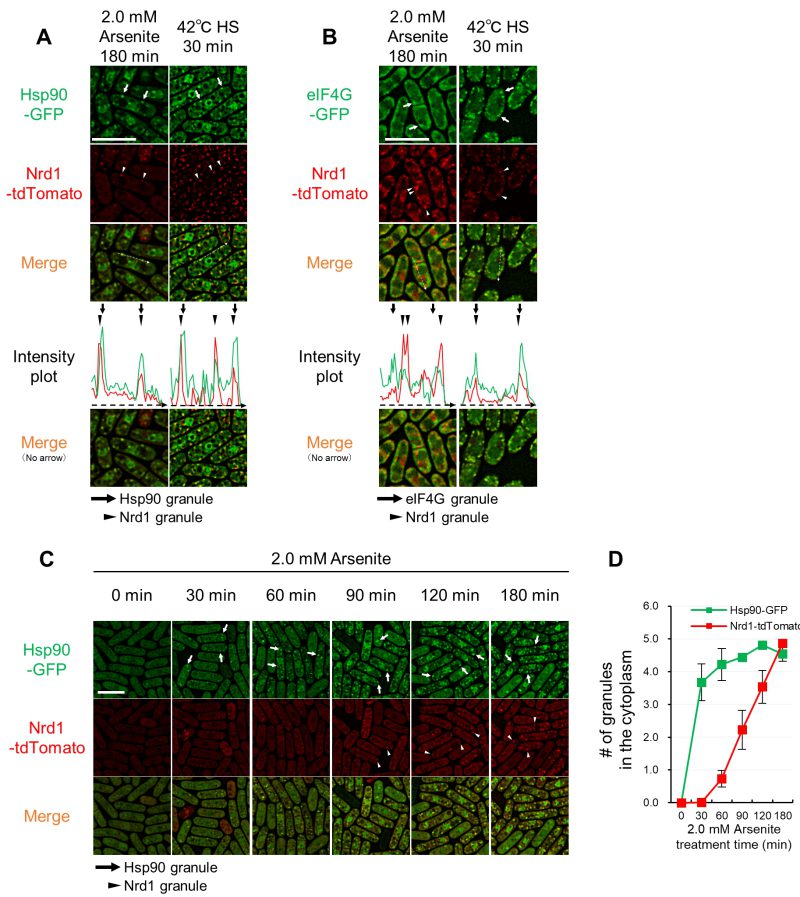Back to article: Arsenite treatment induces Hsp90 aggregates distinct from conventional stress granules in fission yeast
FIGURE 3: Nrd1 co-localizes with Hsp90 granules, but not with SGs, upon arsenite stress. (A, B) Co-localization analysis of Nrd1-tdTomato (red) and Hsp90-GFP (green) (A) or eIF4G-GFP (green) (B) after 2.0 mM arsenite treatment for 180 min at 27◦C (A) or 42◦C HS for 30 min. Arrows indicate representative Hsp90 granules or eIF4G granules, and arrowheads indicate representative Nrd1 granules. The dashed arrows in the merged images correspond to those below the intensity plot. (C) Nrd1 granule formation is slower than that of Hsp90. Representative images of the cells expressing Hsp90- GFP (green) and Nrd1-tdTomato (red) from their own promoters upon 2.0 mM arsenite treatment for the indicated times at 27◦C. Arrows and arrowheads indicate representative Hsp90 granules and Nrd1 granules, respectively. Scale bars: 10 µm. (D) The number of Hsp90 granules (green) and Nrd1 granules (red) per cell from (C). The graphs show mean ± SE (n=3).

